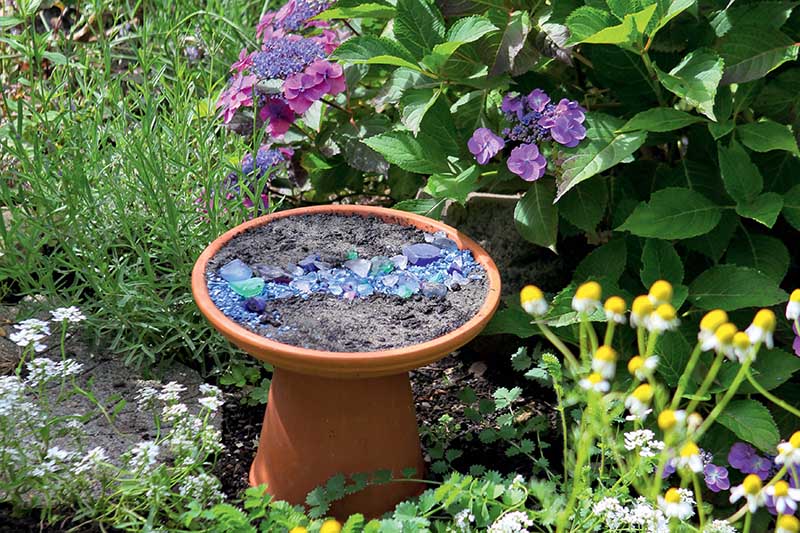We link to vendors to help you find relevant products. If you buy from one of our links, we may earn a commission.
If you’d like to turn your back on chemical solutions to gardening challenges, Stephanie Rose’s book, “Garden Alchemy: 80 Recipes and Concoctions for Organic Fertilizers, Plant Elixirs, Potting Mixes, Pest Deterrents, and More,” available on Amazon, may provide all the guidance you need.
With 80 organic recipes for essentials like compost, fertilizer, and pest deterrents, as well as instructions on soil testing, plant propagation, and attracting beneficial pollinators, it’s got everything you need to restore your gardens to a more natural, self-sustaining state.
In this article, we’ll discuss the book in depth, to help you determine if it deserves a place on your gardening shelf.
About the Author
Author Stephanie Rose is an accomplished writer, instructor, and international speaker.
Certified in both permaculture and herbalism, she is a Master Gardener who volunteers her time as a developer of children’s gardens in the Vancouver area.
Her website, Garden Therapy: Better Living Through Plants, as well as numerous books, are focused on organic gardening, natural healing, and art as integral parts of a life well-lived.
First Impressions
When I get a new book, I love to feel the heft of it and take in the new-book smell. For me, it’s a present waiting to be opened, so I flip right to the middle and dig in.
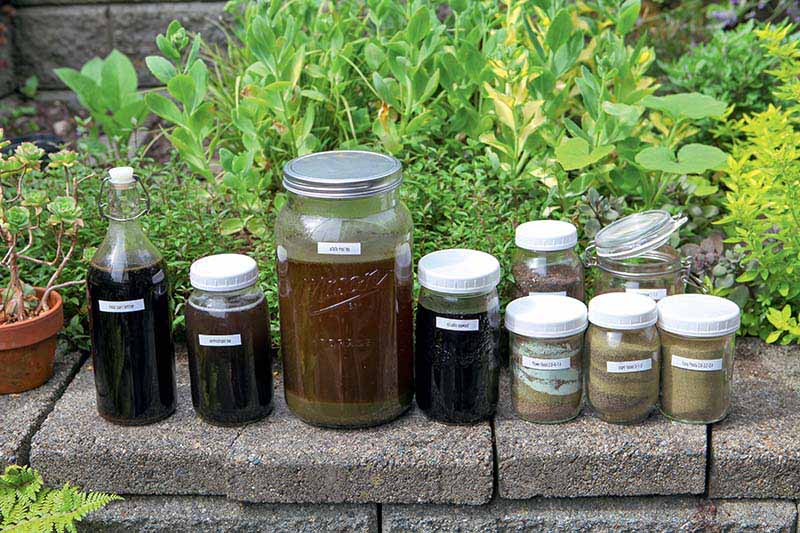
What I found roughly mid-book was a colorful photo. Perched on a stone wall beside a green garden were nine assorted jars.
Each had a homemade label and contained mysterious contents ranging from brownish liquids to sand-like layers.
The print surrounding the photo was crisp and orderly, and the font was a friendly, readable size. In short, I was hooked.
With a title that conjured images of pointy-hatted wizards at lab tables, I couldn’t wait to find out what we were going to turn to gold or cure for all time in the garden.
Cover to Cover
The paperback edition of “Garden Alchemy” measures 6.8 x 0.6 x 9.7 inches, weighs 14.1 ounces, and has 128 pages. It has an oaktag cover and glued spine.
Hefty pages are generously adorned with glossy photos.

The author has taken her own photographs, and they are sharp and plentiful. The text is well placed and user friendly, with eye-appealing spacing, font variation, and graphic representations.
Chapter introductions and descriptions are concise, conversational, and informative. The recipes make up the bulk of the volume, as one would expect.
An introduction and opening section called “What is Garden Alchemy?” give us a glimpse into the author’s philosophy about plants being the “… most generous and patient teachers…”
She stresses that like the ancient alchemists who sought immortality through mystical elixirs, those who seek garden perfection through universal solutions need to refocus their efforts and accept that it is only through “observation, testing, and time” that we get to know what our unique gardens need.
Readers are advised to start with soil testing per the instructions in the first chapter, try a few recipes, gain a little confidence, and gauge the results.
With this friendly welcome and invitation to jump right in, I proceeded to read the five DIY-packed chapters that follow.
Here are the highlights of each:
Soils and Mulches
The first chapter is the jumping off point for using this book to the best advantage. Readers learn to identify the components and pH of garden soil with step-by-step recipes that call for common ingredients.
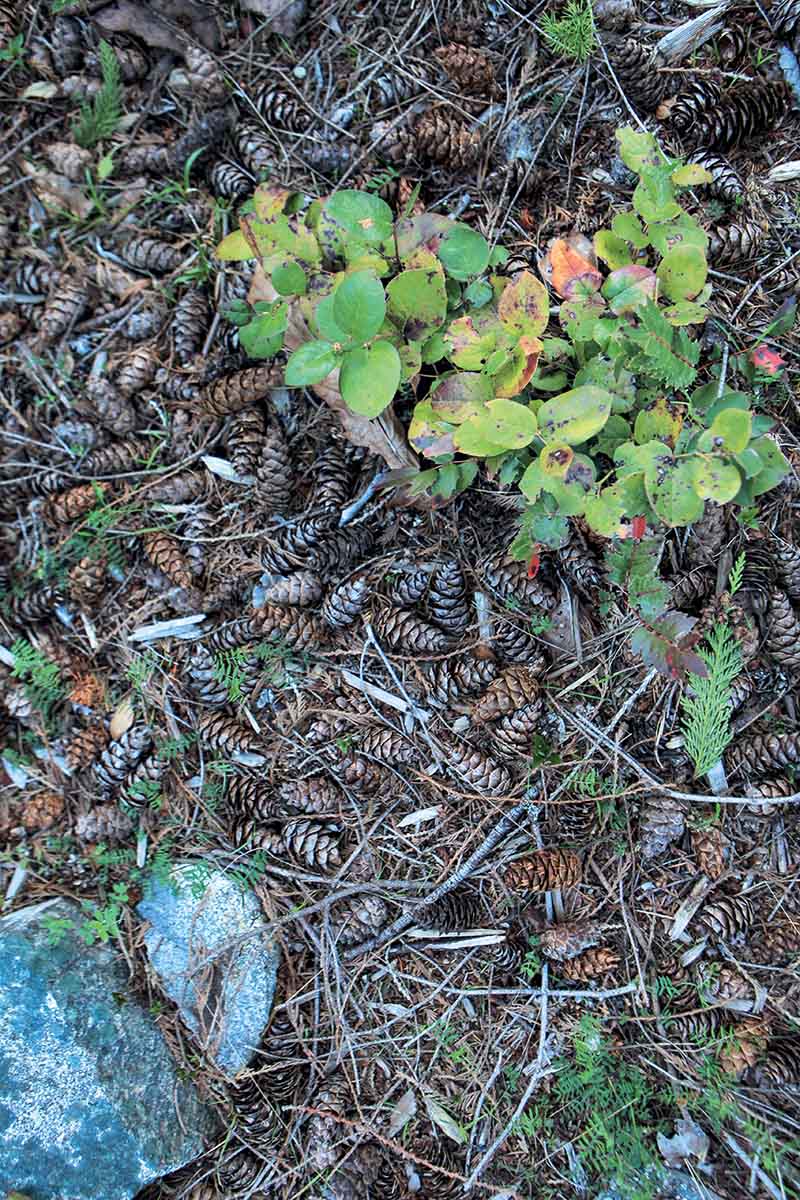
Next is a useful section about soilless potting medium and a list of organic ingredients from which it can be made.
There is a brief description of each type, and a “Symbols Legend” and color bars indicate at a glance outstanding features of each, such as nutrients, drainage, and air.
Recipes for soilless mixtures follow, including a “Lawn Mix,” “Seedling Transplant Mix,” and “Frugal Mix.”
The first chapter concludes with a discussion of mulch, and a chart defining a range of options from “Compost” and “Leaf Mold” to “Seaweed” and “Sheet Mulching.” There are brief definitions, as well as tips for best use.
Propagation
The second chapter builds on readers’ newly acquired knowledge of their garden soil, and how to adjust its makeup with natural ingredients.
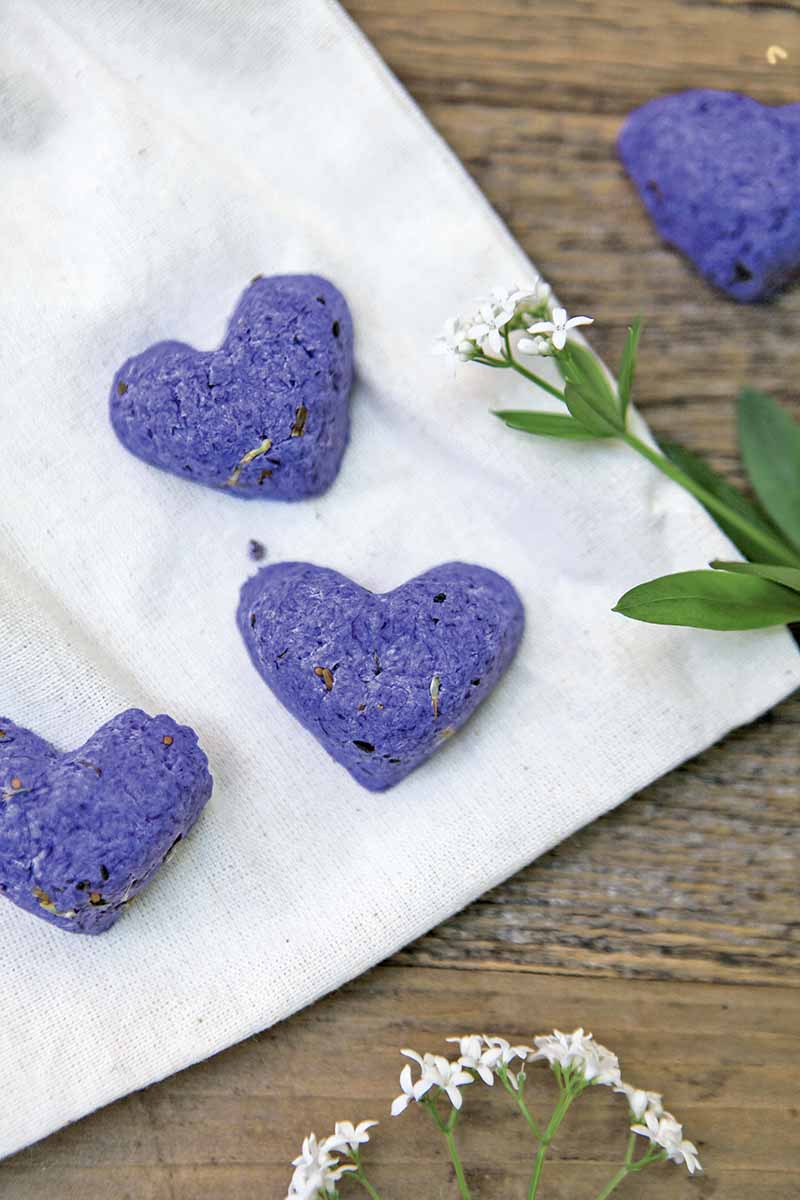
Here we meet the challenges and reap the rewards of starting plants from seeds and cuttings, stepping stones in our evolving understanding of what makes our gardens thrive.
A clever test for seed viability is followed by instructions for upcycling toilet paper tubes and egg cartons into seed starters. Then it’s on to imaginative ideas for making seed bombs, mats, and disks.
The transition from seed propagation to cuttings comes in the form of a recipe for chamomile tea to prevent an all too common killer of seedlings called “damping off.”
The chapter closes with easy ways to root soft stem cuttings in both water and willow water, with all the DIY info you need for success.
Compost
The next chapter provides all you ever wanted to know about compost. Turning common ingredients into garden gold is easier than you think!
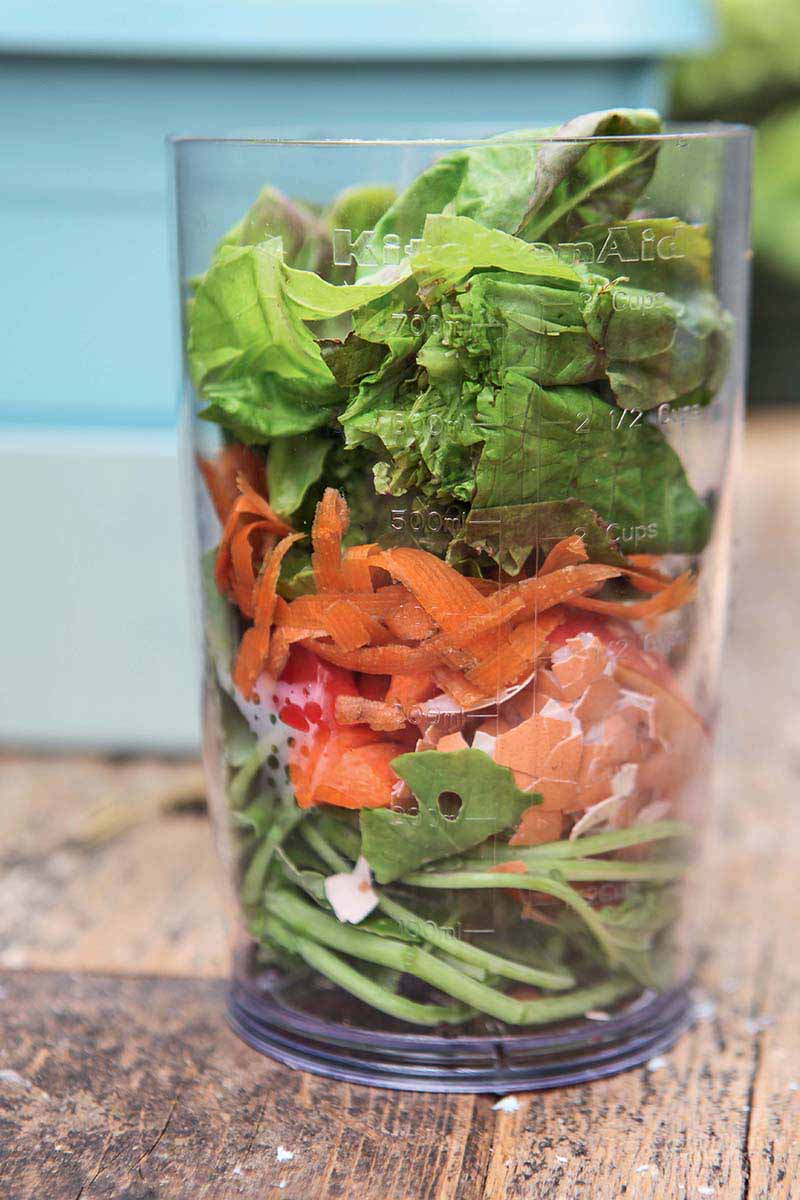
From what compost is – “… organic matter that has been broken down by soil microorganisms…” to what it’s not – soil, you’ll effortlessly learn how to find the right balance between green and brown.
Descriptions of various types of compost systems and their pros and cons offer food for thought as you contemplate ways to enrich your soil while saving money at the same time.
An introduction to “Quick Return Composting” rounds out this section before we move on to the addition of worms for vermicomposting.
Recipes for worm food, compost tea, and vermicompost tea complete this comprehensive portion of the book
Fertilizers and Garden Teas
Now we move beyond building soil structure to boosting the nutritive components of the earth in our gardens.
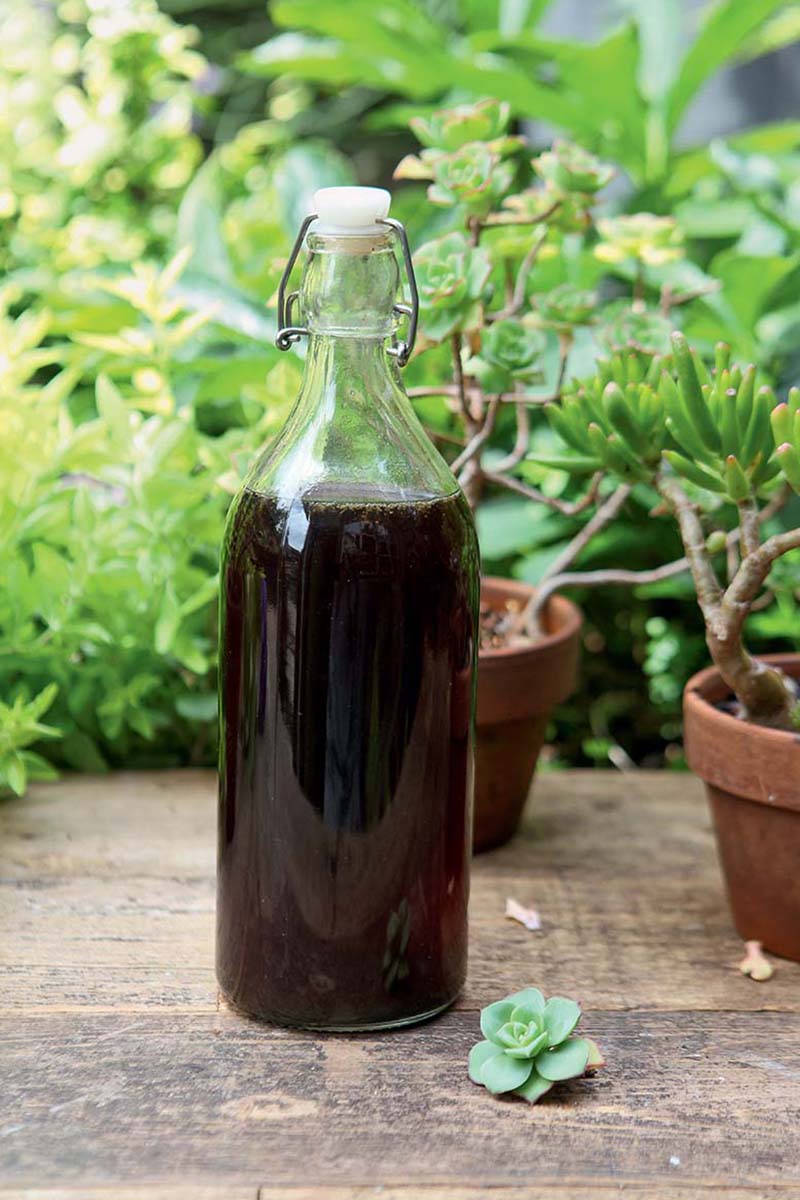
Rose begins with a discussion of primary and secondary nutrients, as well as the micronutrients that are available to plants in healthy soil.
She then presents common organic soil amendments, with a photo and brief description of each. Here you’ll discover resources like oyster shell flour and mushroom manure.
Next is a list of organic sources of the three primary plant nutrients, nitrogen (N), phosphorus (P), and potassium (K), and their speed of availability in soil.
Recipes for fertilizers, garden teas, and foliar sprays follow, and include such plant food yummies as “Comfrey Garden Smoothie.”
Birds, Bees, and Bugs
Once the soil is built and plants are flourishing, Rose turns our attention to supporting beneficial wildlife in the garden.
From the “Butterfly Puddler” to the “Bee Bath,” and recipes for hummingbird nectar, birdseed mixes, and suet, the author gives readers creative ideas for attracting pollinators, and critters that prey on insect pests.
Rose offers natural solutions, like planting especially for aphids to keep them away from prize specimens, and getting a pet to mark your territory with its pest-deterring scent.
She impresses upon readers the notion that a thriving garden is a harmonious one in which “small populations of pests” contribute to a “more balanced ecosystem.”
DIY bug traps and herbal deterrents bring this informative section to a close.
“A Regenerative, Self-Maintaining Garden”
With her creative natural recipes, Rose doesn’t just advise, she equips readers with the tools needed to put a mindful, organic gardening approach into action.
Readers are encouraged to be responsible “plant parents” who provide a nurturing environment for maturation.
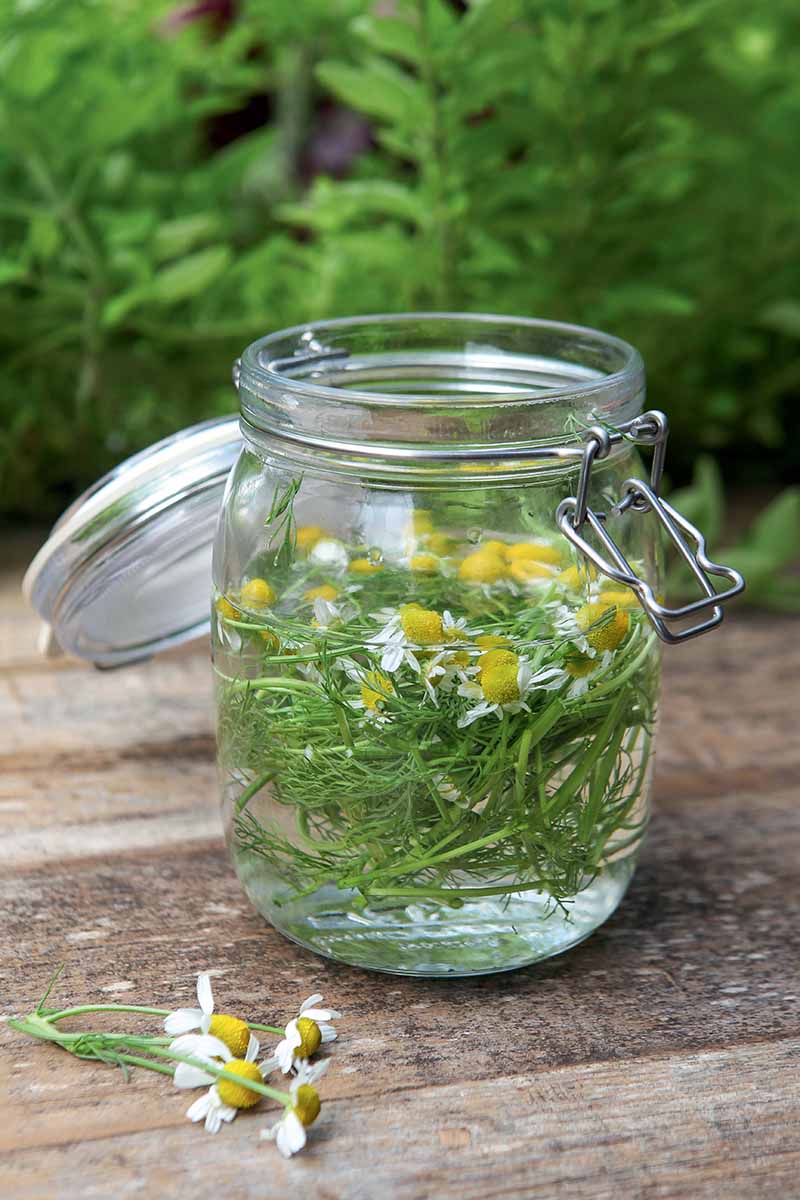
She says, “You can read and study every written word, but in the end, it’s getting your hands dirty that will give you the definitive answer how to best grow plants in your unique garden” (“What is Garden Alchemy?” p. 11).
I think this book achieves its purpose well and deserves your consideration.
At this point, I would be remiss if I didn’t let the editor part of me do some nitpicking. There are a few minor grammar issues, but they are not detrimental to the book’s contents or conversational tone.
However, there is one detail that I think needs clarification:
On page 46, Rose recommends that seed tapes, mats, and disks be “… covered with a fine 1-inch (2.5 cm) layer of soil…”
Seed planting depths are not one-size-fits-all. Be sure to sow at a depth that is appropriate for your particular seeds.
I think this book deserves a spot on the bookshelf, or better yet, in the potting shed, where the recipes will soon be as dog-eared and annotated as any of your favorite cookbooks.

Head to Amazon to get your copy of “Garden Alchemy: 80 Recipes and Concoctions for Organic Fertilizers, Plant Elixirs, Potting Mixes, Pest Deterrents, and More” and begin your regenerative journey to garden bliss.
For more gardening books you’re sure to love, you’ll want to read these reviews next:
- Cultivating Harmony with Nancy Lawson’s The Humane Gardener
- On Constructing Urban Gardens with Matt James
- Restoring Habitat with Charlotte Adelman and Bernard Schwartz’s Midwestern Native Shrubs and Trees
© Ask the Experts, LLC. ALL RIGHTS RESERVED. See our TOS for more details. Photos © Stephanie Rose, Garden Alchemy, reprinted with permission. Cover photo via Cool Spring Press.
